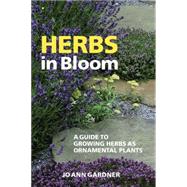
Note: Supplemental materials are not guaranteed with Rental or Used book purchases.
Purchase Benefits
What is included with this book?
| Acknowledgments | 9 | (2) | |||
| Preface | 11 | (6) | |||
| Chapter One Growing Flowering Herbs, | 17 | (14) | |||
|
18 | (1) | |||
|
19 | (2) | |||
|
21 | (2) | |||
|
23 | (3) | |||
|
26 | (3) | |||
|
29 | (2) | |||
| Chapter Two Landscaping with Flowering Herbs, | 31 | (22) | |||
|
33 | (2) | |||
|
35 | (3) | |||
|
38 | (2) | |||
|
40 | (2) | |||
|
42 | (3) | |||
|
45 | (2) | |||
|
47 | (6) | |||
| Chapter Three Plant Portraits from A to Z, | 53 | (308) | |||
|
54 | (3) | |||
|
57 | (5) | |||
|
62 | (3) | |||
|
65 | (4) | |||
|
69 | (5) | |||
|
74 | (5) | |||
|
79 | (2) | |||
|
81 | (5) | |||
|
86 | (3) | |||
|
89 | (4) | |||
|
93 | (2) | |||
|
95 | (3) | |||
|
98 | (3) | |||
|
101 | (4) | |||
|
105 | (4) | |||
|
109 | (3) | |||
|
112 | (2) | |||
|
114 | (3) | |||
|
117 | (2) | |||
|
119 | (3) | |||
|
122 | (4) | |||
|
126 | (2) | |||
|
128 | (3) | |||
|
131 | (5) | |||
|
136 | (4) | |||
|
140 | (3) | |||
|
143 | (3) | |||
|
146 | (3) | |||
|
149 | (3) | |||
|
152 | (5) | |||
|
157 | (3) | |||
|
160 | (3) | |||
|
163 | (2) | |||
|
165 | (2) | |||
|
167 | (5) | |||
|
172 | (3) | |||
|
175 | (8) | |||
|
183 | (2) | |||
|
185 | (2) | |||
|
187 | (2) | |||
|
189 | (5) | |||
|
194 | (5) | |||
|
199 | (8) | |||
|
207 | (3) | |||
|
210 | (3) | |||
|
213 | (4) | |||
|
217 | (6) | |||
|
223 | (5) | |||
|
228 | (4) | |||
|
232 | (4) | |||
|
236 | (3) | |||
|
239 | (3) | |||
|
242 | (2) | |||
|
244 | (3) | |||
|
247 | (4) | |||
|
251 | (3) | |||
|
254 | (4) | |||
|
258 | (6) | |||
|
264 | (7) | |||
|
271 | (3) | |||
|
274 | (6) | |||
|
280 | (3) | |||
|
283 | (4) | |||
|
287 | (4) | |||
|
291 | (2) | |||
|
293 | (3) | |||
|
296 | (3) | |||
|
299 | (4) | |||
|
303 | (3) | |||
|
306 | (4) | |||
|
310 | (2) | |||
|
312 | (3) | |||
|
315 | (4) | |||
|
319 | (4) | |||
|
323 | (3) | |||
|
326 | (6) | |||
|
332 | (6) | |||
|
338 | (4) | |||
|
342 | (5) | |||
|
347 | (3) | |||
|
350 | (3) | |||
|
353 | (3) | |||
|
356 | (5) | |||
| Appendix I Common Name Cross-reference, | 361 | (7) | |||
| Appendix II Herbs in Bloom from Spring to Fall, | 368 | (2) | |||
| Appendix III Herb Sources, | 370 | (5) | |||
| Bibliography, | 375 | (8) | |||
| Index of Plant Names, | 383 |
The New copy of this book will include any supplemental materials advertised. Please check the title of the book to determine if it should include any access cards, study guides, lab manuals, CDs, etc.
The Used, Rental and eBook copies of this book are not guaranteed to include any supplemental materials. Typically, only the book itself is included. This is true even if the title states it includes any access cards, study guides, lab manuals, CDs, etc.